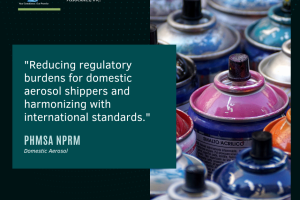Hazmat 101 Pt. 3

The Basics-Why?
We have at long last made it to the final installment of our three-part series. To see where we began this journey, make sure to check out part-one and part-two of the series. Now let’s jump right into it.
The “Why” is a bit simpler than the “Who” and the “What,” but it doesn’t mean it’s any less important. In all actuality, you could argue it’s more important, but that debate can be saved for another time. Understanding the consequences associated with the handling and transportation of hazardous materials is vitally important to the health and safety of the environment and all persons who may encounter the hazardous material. Today I would like to focus on 3 main areas of why it’s important for us as hazardous materials employees to understand why we do what we do.
The first area is: SECURITY
Each year more that 3 billion (with a “B”) tons of regulated hazardous materials are transported in the United States and up to 30 billion dollars’ worth of cargo are stolen each year. With so much stolen hazardous materials, if it were to fall in the wrong hands, it could pose a great risk to the public as well as the economy. Some examples of hazardous materials being used in real world terroristic attacks include: 1993 World Trade Center, Oklahoma City Bombing, and New Delhi, India and that’s just to name a few. Which is why we must be vigilant in our securement of hazardous materials. We always say “If you see something, say something.”
The second: ENVIRONMENTAL
The second point is a bit of a no brainer. The materials we transport pose a great risk to health of both people and the environment. For example, while not a terroristic attack, the 2014 Elk River Chemical Spill affected 169+ people and hospitalized 14 when crude Methyl cyclohexane methanol (MCHM) was released into the Elk River municipal water source. In all, some 300,000 residents would have to turn off their water supply for more than a week. This is just a small incident of how these potentially hazardous materials can affect our environment and exactly why we have established governing bodies (OSHA, EPA, DOT, NRC) to regulate these hazardous materials.
The third: COST
And speaking of regulating bodies, the last reason behind our why, is obviously cost. Hazardous material transportation is a serious business, and so are their fines. As of May 3, 2021, the Department of Transportation adjusted their penalties for a second time this year. The new penalty values are as follows:
- $84,425 per day, per violation maximum civil penalty of hazardous materials shipping violations
- $196,992 per day, per violation maximum civil penalty resulting in death, serious illness, severe injury or substantial property damage.
- $508 per employee, per day minimum penalty for failure to provide hazmat training as required by 49 CFR 172.704.
With numbers like that, it’s no wonder cost is a factor in the “WHY” we do what we do. It’s easy to see how these seemingly small oversights and missteps can become overwhelming fast.
So, whether your focus of why is cost, the environmentally friendly aspect, or security, it’s important to understand how important our vigilance is in keeping hazardous materials safe as we transport them from point A to point B. And an easy way to do that stay vigilant is follow us on Facebook, Twitter, LinkedIn, and subscribe to our newsletter. Another great way is to keep current with your training whether you need US Ground, Air, or Sea, Transportation Compliance Associates, Inc. has you covered! Let us work harder so you can work smarter. For a FREE consultation give us a call at (724) 899-4100 or visit us at learnhazmat.com and one of our team members will help you decide what industry leading training or compliance solution best fits your needs!
Tag:EPA, Hazmat training, NRC, OSHA, safety




